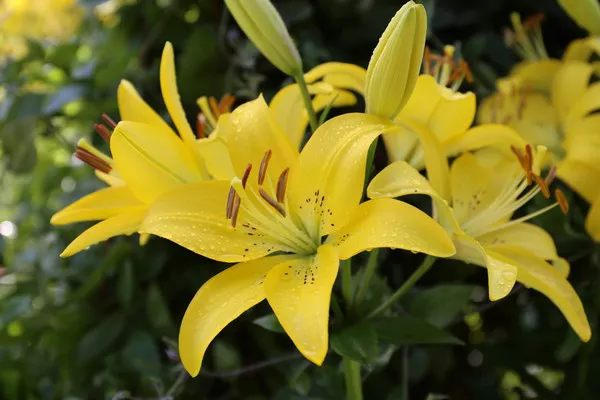Flowers, often adorning our homes and gardens, bring joy and beauty to our surroundings. However, as pet owners, it is crucial to be aware that not all flowers are safe for our furry companions.
Identifying Toxic Flowers
Flowers come in various shapes, sizes, and colors, but not all are harmless for dogs. Some common toxic flowers include lilies, azaleas, daffodils, and tulips. Flowers such as lilies, particularly popular in floral arrangements, can be extremely toxic to cats and dogs if ingested. The ingestion of certain parts of azaleas, such as the leaves and nectar, can lead to gastrointestinal distress and more severe complications. Daffodils and tulips, while beautiful, contain toxins that can cause vomiting, diarrhea, and even more serious issues in dogs.
Understanding the Dangers
When it comes to toxic flowers, awareness is key. Knowing the specific dangers associated with certain blooms can help pet owners make informed decisions about what to plant in their gardens or bring into their homes. The ingestion of toxic flowers can lead to a range of symptoms, including nausea, lethargy, and in severe cases, organ failure. Being vigilant about the potential risks can ultimately save a dog’s life.
Safe Alternatives for Pet-Friendly Gardens
Creating a pet-friendly garden involves selecting flowers that are non-toxic to dogs. Marigolds, petunias, and sunflowers are examples of beautiful flowers that pose minimal risk to our furry friends. Including these safe alternatives in our gardens ensures that our dogs can roam freely without the fear of accidentally ingesting harmful flowers. By making informed choices, we can strike a balance between a vibrant garden and a safe environment for our pets.
The Role of Floral Arrangements
Floral arrangements can add a touch of elegance to any home, but it is crucial to choose flowers wisely when sharing living spaces with dogs. Common flowers used in arrangements, such as chrysanthemums and baby’s breath, can be toxic to our furry companions. Opting for pet-friendly flowers, such as roses and orchids, can eliminate the risk of accidental ingestion. Additionally, placing arrangements out of a dog’s reach can prevent curious pups from nibbling on potentially harmful blooms.
Recognizing Symptoms of Flower Ingestion
Despite our best efforts, accidents can happen. Recognizing the symptoms of flower ingestion is vital for prompt veterinary intervention. If a dog exhibits signs of lethargy, vomiting, diarrhea, or difficulty breathing after being around flowers, immediate action is required. Timely communication with a veterinarian can make all the difference in ensuring the best possible outcome for our pets.
Veterinary Care and Treatment Options
In the unfortunate event of flower toxicity, seeking veterinary care is paramount. Veterinarians can provide specific guidance based on the type of flower ingested and the severity of symptoms. Treatment options may include induced vomiting, activated charcoal administration, and supportive care to manage symptoms. The sooner professional help is sought, the better the chances of a positive outcome for our furry friends.
Educating Pet Owners
As responsible pet owners, it is our duty to educate ourselves and others about the potential dangers associated with certain flowers. Sharing knowledge about toxic flowers within our communities and on social media platforms can contribute to a safer environment for pets. A collective effort to raise awareness ensures that more dogs are protected from accidental flower ingestion, reducing the number of emergency veterinary visits.
Conclusion
In conclusion, while flowers enhance our surroundings with their beauty and fragrance, not all are safe for our canine companions. Understanding the risks associated with certain flowers is crucial for responsible pet ownership. By identifying toxic flowers, creating pet-friendly gardens, and being mindful of floral arrangements, we can strike a balance between a vibrant living space and the safety of our dogs. Through education and awareness, we can collectively contribute to a world where flowers and pets coexist harmoniously, ensuring the well-being of our furry friends.


